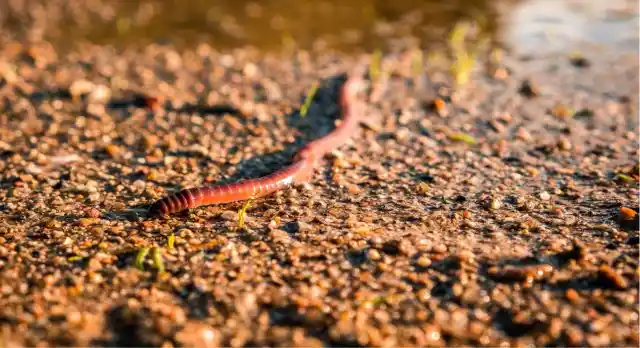Why Do Earthworms Come Out When It Rains? Science Behind It
Have you ever wondered why earthworms seem to magically appear on the surface when it rains? It’s a curious and common phenomenon that many of us have observed. In this article, we’ll explore the intriguing reasons behind why earthworms come out when it rains. From their natural habitat to their survival instincts, we’ll uncover the science that drives these wiggly creatures to the surface during wet weather. So, let’s dive into the captivating world of earthworm behavior!

Why Do Worms Come to the Surface When It Rains?
The behavior of earthworms surfacing during rainfall is an essential part of their natural biology and survival strategy. It’s essential to understand that earthworms are not coming out of nowhere; they are simply responding to their environment’s cues. Here’s a closer look at the reasons why worms come to the surface when it rains:
1. Hydration and Moisture:
As mentioned earlier, earthworms require moisture to facilitate gas exchange through their skin. The rain provides much-needed hydration and prevents dehydration in dry soil conditions.
2. Soil Permeability:
When the ground becomes saturated with water, it becomes easier for earthworms to move through the softer, more porous soil. This encourages them to surface and explore areas they may not reach in drier conditions.
3. Breeding and Reproduction:
For many earthworm species, rainfall triggers their reproductive cycles. The increased moisture provides an ideal environment for egg-laying and hatching, supporting the next generation of earthworms.
4. Feeding Opportunities:
Moist conditions on the surface lead to an abundance of organic matter, which earthworms feed on. They come up to take advantage of the readily available food sources.
5. Escape from Burrows:
In heavy rains, earthworm burrows can become flooded. By coming to the surface, they escape the waterlogged conditions and find alternative places to continue their activities.
Where Do Worms Come From When It Rains?
It might seem puzzling to see so many earthworms suddenly appearing on the ground after rain. However, they are not materializing out of thin air. Earthworms live in the soil all around us, but when it rains, they become more visible for the reasons we’ve explored earlier. Here’s a breakdown of where worms come from when it rains:
- Underground Burrows: Earthworms spend most of their lives in underground burrows, where they create networks of tunnels to move through the soil and search for food.
- Nearby Habitats: Earthworms are prevalent in various habitats, including gardens, lawns, forests, and agricultural fields. When it rains, they emerge from their burrows in these areas.
- Natural Populations: Earthworms are an essential part of healthy soil ecosystems, and there are naturally occurring populations in most regions.
How to Get Rid of Worms After Rain (If Necessary)?
While earthworms are highly beneficial to soil health and nutrient cycling, there may be instances where you want to reduce their presence in certain areas, such as on paved surfaces or in your home. Here are some non-harmful methods to encourage earthworms to move away from undesired areas:
- Manual Removal: Gently pick up earthworms and relocate them to a more suitable location, such as a garden bed.
- Reduce Moisture: If possible, adjust irrigation or drainage in the area to discourage earthworms from surfacing there.
- Barrier Methods: Use physical barriers like sand or diatomaceous earth to create a deterrent for earthworms in specific spots.
- Natural Predators: Encourage natural predators of earthworms, like birds and predatory insects, to frequent the area.
- Chemical-Free Solutions: Avoid using chemical pesticides, as they can harm beneficial organisms like earthworms and disrupt the soil ecosystem.
Key Takeaway
The emergence of earthworms when it rains is a natural response to changing environmental conditions. They come to the surface to avoid drowning in waterlogged soil, find mates for reproduction, access food sources, and explore new areas. Earthworms play a crucial role in maintaining healthy soil ecosystems and nutrient cycling, making them valuable contributors to the environment.
While you may observe a higher number of earthworms after rain, it’s essential to appreciate their presence and the vital work they do in improving soil quality. If necessary, use non-harmful methods to encourage earthworms to move away from specific areas, but always do so with an understanding of their ecological importance.
Next time you witness earthworms emerging during rainfall, take a moment to marvel at the fascinating science behind this natural phenomenon and the essential role these wriggling creatures play in our ecosystem.
